Featured Brands
Recommended Products
Get free shipping, on most items, with your $50 purchase today! Same day shipping on most orders if placed by 3pm PST.
PLEASE NOTE:
This offer is only available to physical shipping addresses in the 48 continental United States (no PO Boxes), and some exclusions apply.
Oversize Charges
Some large and/or heavy items are subject to additional oversize charges that are separate from standard shipping costs.
Bike Build Process
All bikes are built, tested, tuned, and ready to ride upon shipment. The bike build process typically takes 2-3 days to complete depending on the bike model and the complexity of the build.
Stock Status
Orders for in-stock items placed by 3PM PST usually ship on the same day. Orders that include special-order or backordered items may be subject to shipping delays depending on product availability. Refer to estimated delivery times in cart when selecting shipping options.

Our Gear Advisors are Ready to Help.

Let’s be honest, you could ride your bike in a pair of Crocs if you wanted to, but there would be significant disadvantages in doing so. Shoes made specifically for biking have grip and/or a cleat that are designed for the type of pedals you are riding. Biking shoes have a more durable construction than your typical running shoe, are stiffer, offer more protection and are sometimes just as lightweight. Whether you are interested in mountain biking shoes, road biking shoes or a casual indoor cycling shoe, this article aims to provide you with the knowledge of the different types of cycling shoes and the features that make up each variation.
Once you have figured out the type of shoe that is best for you, head over to our website and check out our massive selection of bicycle shoes.
There are three types of main distinctions in the cycling shoe world, mountain bike shoes, road bike shoes and casual bike shoes. Mountain bike shoes can have either a flat, grippy sole, like a tennis shoe, or they can have an integrated cleat with a grippy tread. Road bike shoes have a cleat on the underside of the shoe and typically do not have any grippy tread as they are not meant for walking. Finally, casual bike shoes are sort of a hybrid among cycling shoes and are used for indoor bike trainers or when biking in a more casual setting where you will be doing a mixture of riding and walking. These shoes usually resemble running shoes but have an integrated cleat on the bottom of the foot, as well as a low-profile grippy tread.
Five Ten Sleuth DLX Canvas | Ride Concepts Vice | Specialized 2FO Roost Clip MTB | Ride Concepts Tallac
Mountain bike shoes are offered in two different styles, flat pedal shoes (or platform pedal shoes) and clipless shoes. Flat pedal shoes are made for traditonal platform pedals, while clipless shoes have a integrated cleat box in the sole, which clips into clipless pedals.
Regardless of the pedal compatibility of your shoes, mountain biking shoes have key features not found on any other form of cycling shoes. Mountain shoes have a grippy tread for keeping in contact with your pedals. The rubber used on the bottom side of the shoe is slightly harder than your average tennis shoe to maintain durability and so they won’t be cut up from the pedal pins. Some mountain biking shoes have extended tread on the heel and toe, which aids in walking in dirt when you may have to get off your bike and push it up a hill. Another key feature found in all high-end mountain biking shoes is an impact absorbing midsole. These are typically made from a dense EVA foam to help mitigate shock and impact forces experienced when riding mountain terrain. Unlike when riding a road bike, mountain bikers must navigate themselves around rocks and uneven terrain, which calls for reinforced toe caps and a more durable shoe design in general. Mountain biking shoes can be found with different types of closure systems depending on the quality and price of the shoe, with entry-level shoes using a traditional lace closure, while middle and high-end shoes use a combination of a lace and velcro strap or even just a wire retention system like a BOA dial. Some key features of mountain bike shoes are:
Time Osmos 15 Road | Specialized Torch 3.0 | Shimano SH-RX800 Women's
Road biking shoes are designed to be lightweight and stiff for optimal weight savings and power transfer. Road shoes are only found with clipless compatibility and usually have a 3-hole pattern (but do sometimes have a 2-hole pattern) while most mountain clipless shoes have a 2-hole pattern. Some cycling shoes that crossover in style (cyclocross, gravel, commuter) have both the 2 and 3-hole patterns. Road bike shoes lack traction on the sole, are very stiff, and typically have cleats that protrude from the soles, making them not very suitable for walking. With road shoes, you will find combinations of Velcro straps, micro-buckles, and wire retention systems for closure systems. Nylon or composite outsoles are common among entry to mid-level road shoes, while high-end road shoes may use carbon fiber for the best combination of stiffness, strength, and weight savings. Thin microfiber uppers make certain that the cycling shoe is lightweight and feels like a second skin on your foot.
Pearl Shimano W Vesta Studio | Shimano SH-IC300w Women's Road | Pearl Izumi Women's Quest Studio
Indoor biking shoes are a combination of road shoes and casual running or tennis shoes. These shoes are designed for indoor cycling on trainers and usually have cleats for clipless pedal compatibility, but also have rubber outsoles to allow for easy walking. The cleats are recessed for better walking ability and the rubber is softer for more cushion and comfort when not on the bike. Indoor cycling shoes are more casual than your average road shoe and therefore are more flexible, which will cost you a slight penalty in power transfer. Indoor cycling shoes can have a lace, strap or wire retention system closure and are found in clipless and flat pedal configurations.
With so many different brands of cycling shoes out there, as well as the different standards in measurement among different countries (US, EU, Euro), it can be hard to know what your cycling shoe size is. No worries, we have come up with a simple step-by-step process to find your perfect size cycling shoe! For more information on fitment, as well as size charts for many popular cycling shoe brands, click here.
Both flat pedal shoes and clipless shoes each have their own individual benefits, but there are some common misconceptions among flat pedal shoes and clipless shoes in the mountain biking world. One common myth is that flat bike pedals are for beginners and clipless pedals being only for more advanced riders. This is simply untrue and some of the most iconic riders use flat pedal shoes out of personal preference. Flat pedals are most popular with aggressive trail and downhill mountain bike riding and offer more versatility than a clipless pedal, specifically in aggressive riding scenarios where one may need to stick their foot out to ‘catch themselves’. Clipless pedals have a clear advantage in pedaling efficiency because the foot is connected to the pedals, which means both the push and pull of the pedal stroke will receive power from your legs. A clipless setup can also be considered to give the rider a more controlled connection in rough areas of the trail, however, this exact scenario can also be a disadvantage in the case you need to quickly use your feet or fall off balance.
JensonUSA carries a wide selection of bicycle shoes from all the top brands. Whether you are looking for flat pedal or clipless mountain shoes, you can trust brands like Five Ten, Ride Concepts, Endura and Crankbrothers. If you are looking for high-quality road shoes, look no further than Sidi, Specialized, Time and Shimano.
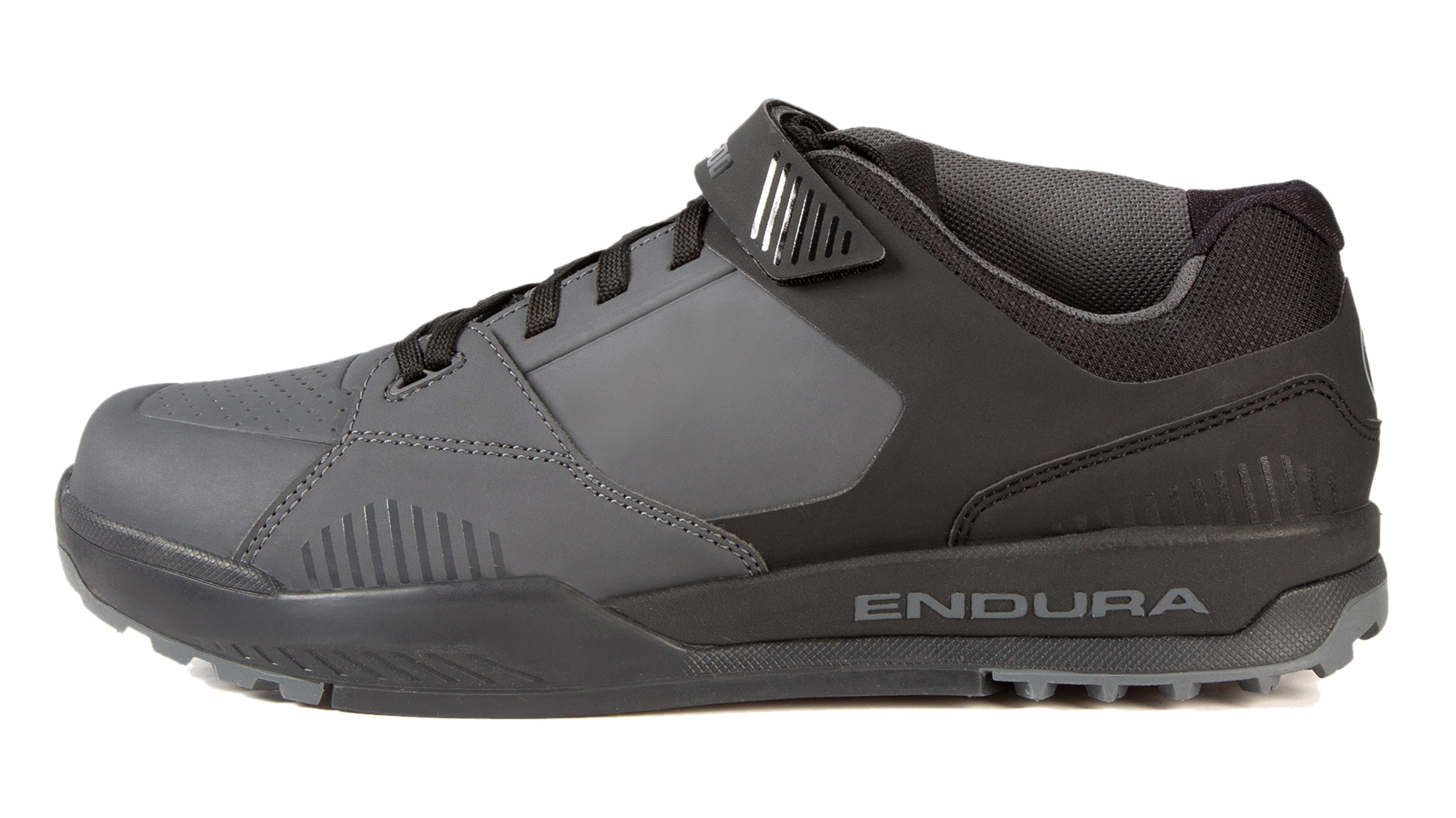 |
Endura Burner MT500 *Avalaible in flat or clipless |
Buy Now - $149.99 |
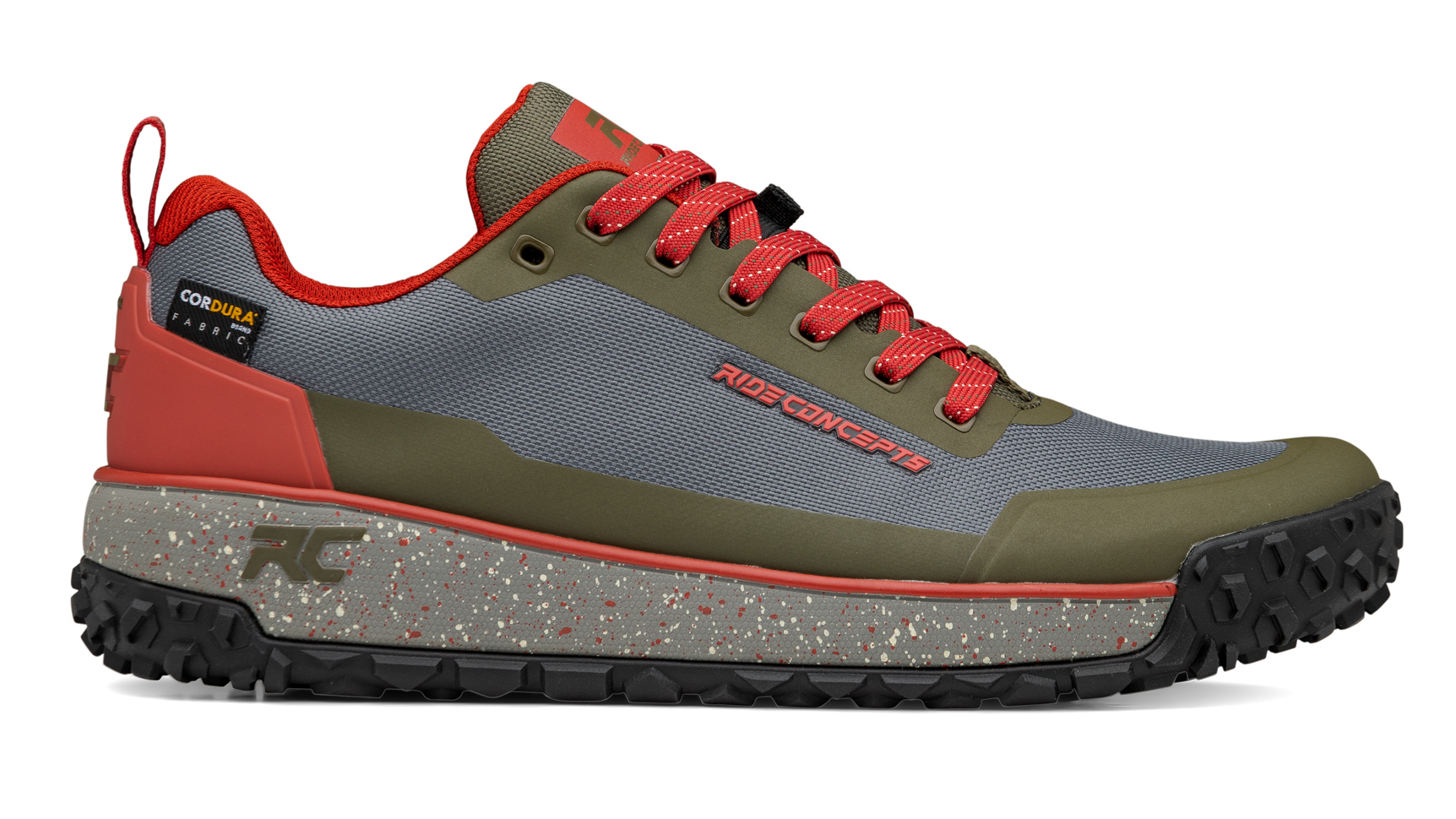 |
Ride Concepts Tallac *Flat Pedal |
Buy Now - $160.00 |
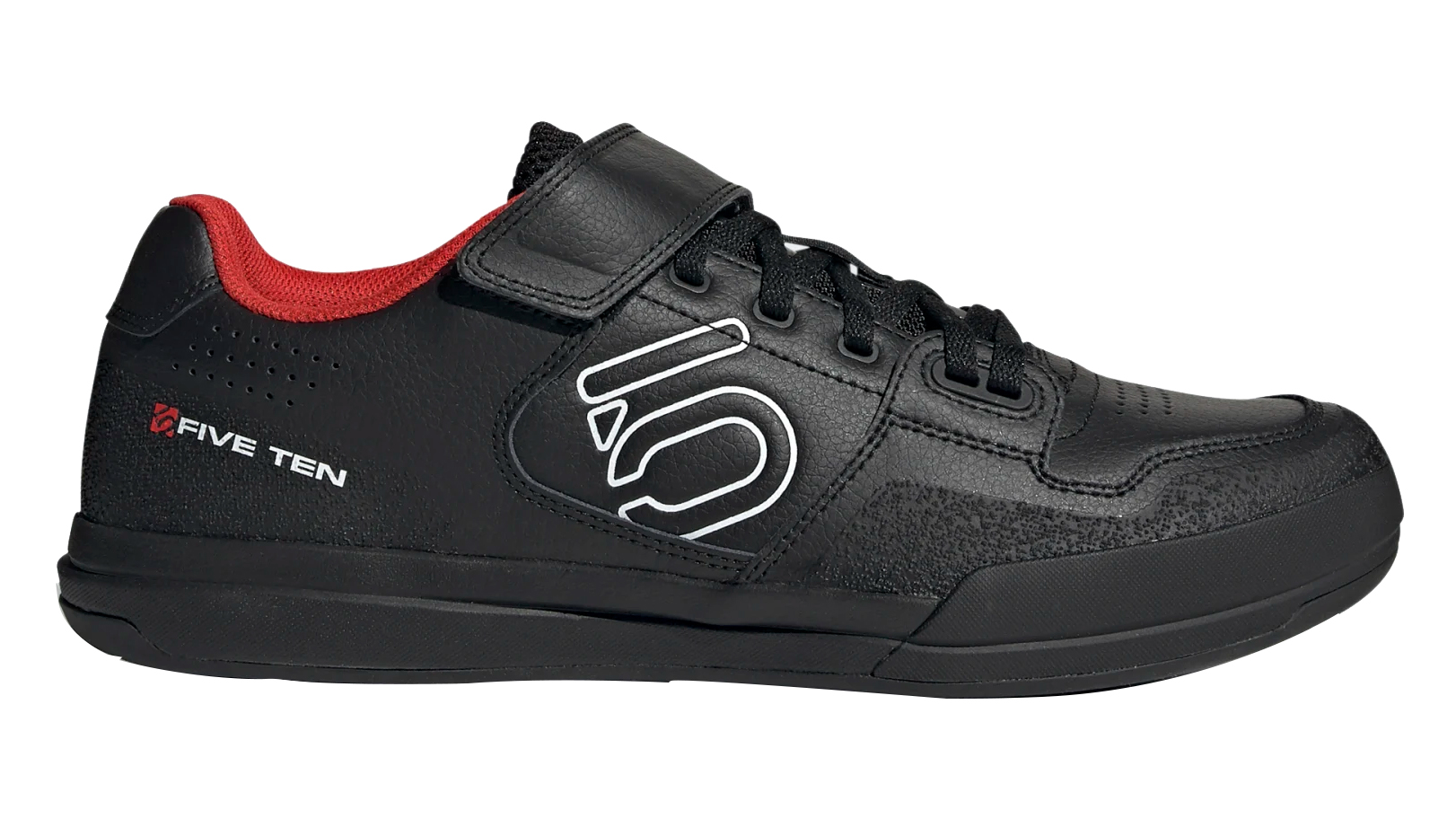 |
Five Ten Hellcat *Clipless |
Buy Now - $120.00 |
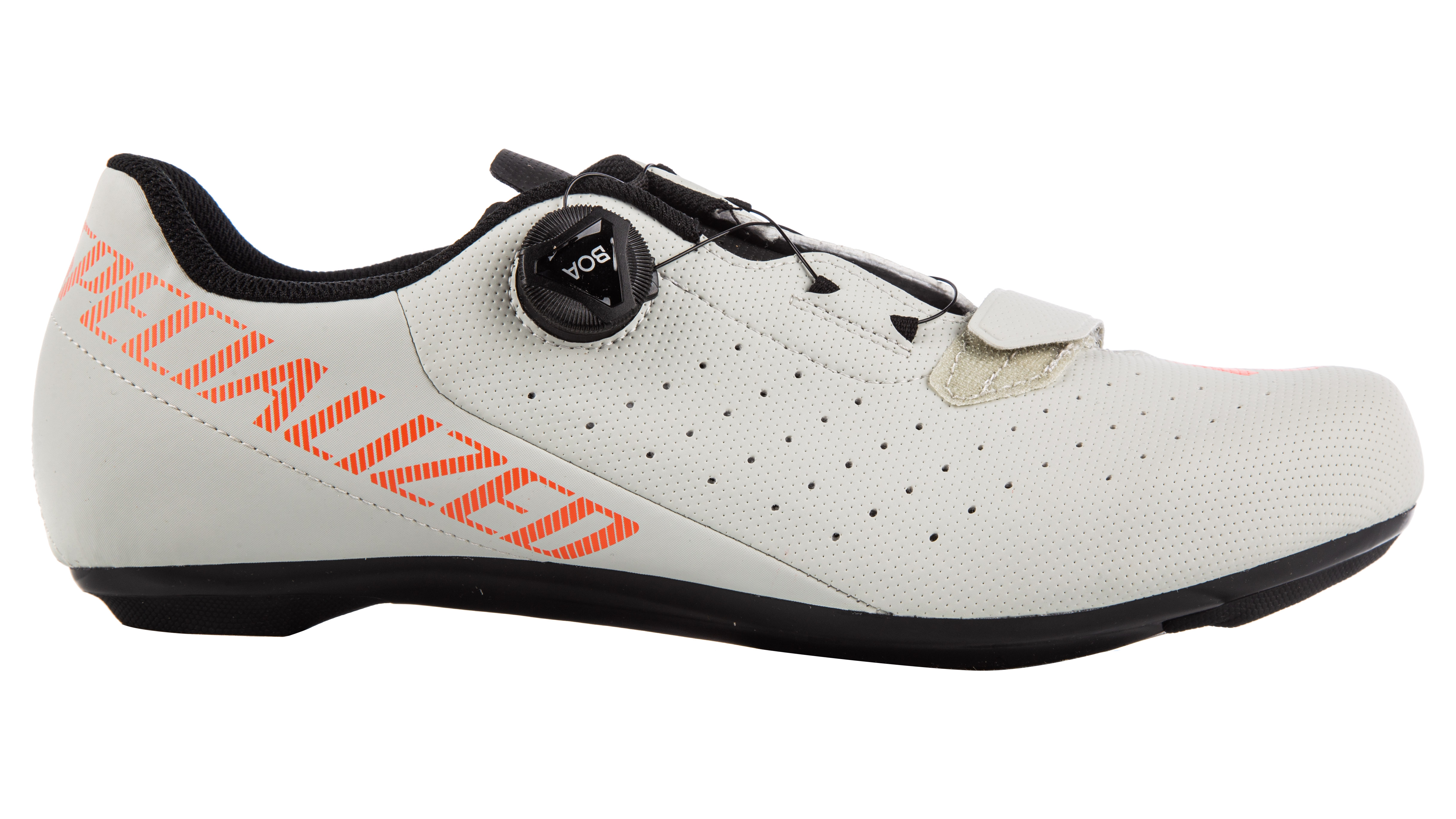 |
Specialized Torch 1.0 *3-bolt |
Buy Now - $119.99 |
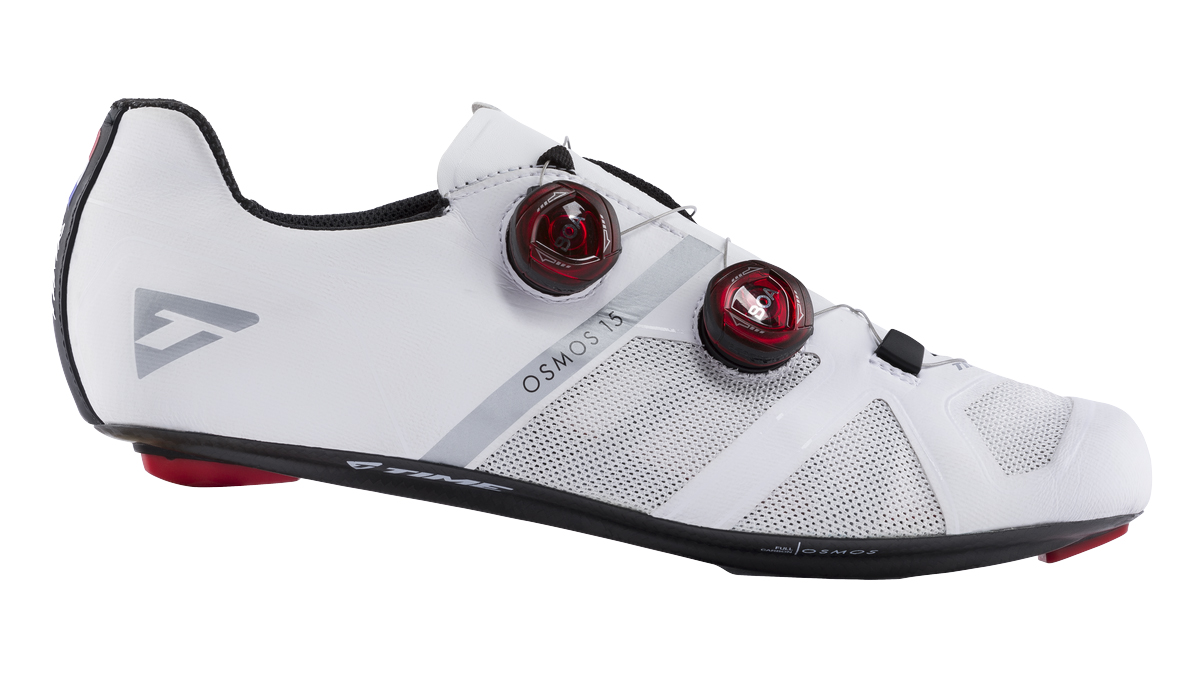 |
Time Osmos 15 *3-bolt |
Buy Now - $120.00 |
 |
Shimano SH-RX800 2-bolt/SPD |
Buy Now - $250.00 |
Whether you are riding a mountain bike, road bike or a trainer, having cycling shoes makes a difference. A stiffer sole aides in power transfer, which in turn can make you more efficient and cause less fatigue. Mountain shoes have protection, comfort, and durability factors that can’t be found on any basic shoe.
You can get away with normal shoes for mountain biking, especially if you are riding platform (flat) pedals. Although, shoes like running shoes or tennis shoes are more flexible, not as durable and don’t have as good of a grip as a dedicated mountain biking shoe. Since road bikes typically only have clipless pedals, wearing normal shoes would not be very comfortable and you would lose a lot of efficiency.
Cycling shoes with stiff soles, especially road shoes, are stiff for optimal power transfer. When the sole of a shoe is stiff rather than flexible more pressure can be applied through your feet and into the pedals making your pedal stroke stronger.
No, all cycling shoes are not universal. Some shoes have a two-hole cleat, while others have a three-hole cleat, each of which are compatible with a different type of pedal.
The term SPD stands for ‘Shimano Pedaling Dynamics’ and is a two-hole clipless configuration intended specifically for mountain biking.
SHOP NOW
SHIP ALMOST ANYTHING & SAVE
SHOP NOW
SHOP NOW
SHOP NOW
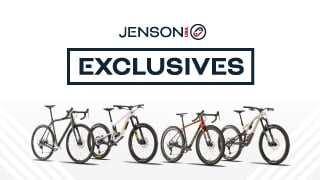



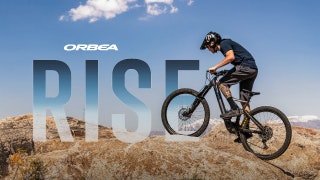
Follow Jensonusa